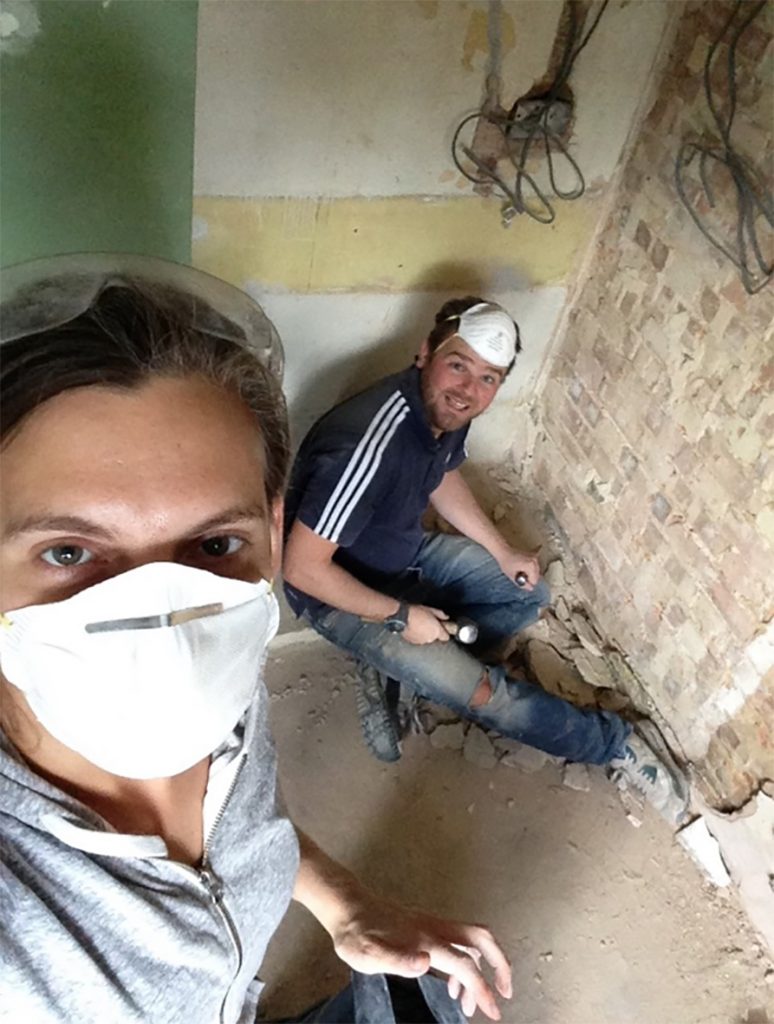Around a quarter of home buyers taking a mortgage in 2016 had help from the Bank of Mum and Dad – or Grandma and Grandpa. Laura Lamb, director of independent mortgage broker The Mortgage Company, explains how financial assistance from family is on the rise as young people get further priced out of the market […]
 Around a quarter of home buyers taking a mortgage in 2016 had help from the Bank of Mum and Dad – or Grandma and Grandpa. Laura Lamb, director of independent mortgage broker The Mortgage Company, explains how financial assistance from family is on the rise as young people get further priced out of the market
Around a quarter of home buyers taking a mortgage in 2016 had help from the Bank of Mum and Dad – or Grandma and Grandpa. Laura Lamb, director of independent mortgage broker The Mortgage Company, explains how financial assistance from family is on the rise as young people get further priced out of the market
There have been several studies on the Bank of Mum and Dad; and the extent to which children of the baby boomers have to ask for help from the generation that benefited from low house prices, jobs for life and final salary pensions to get on the property ladder.
Legal and General’s study in May 2016 predicted that in 2016 the Bank of Mum and Dad (which could also include Grandma and Grandpa) gave an average of £17,500 each to help fund £77 billion worth of property purchases.
This equates to a staggering 25% of all mortgage transactions in 2016. That figure is set to increase with 32% of all future homeowners expecting to need, or receive, help from their families to buy their first home.
Why is it the under 35s need this level of help? There are several factors, the biggest being the rise in house prices. Put into context, if food prices and wages had risen in line with house prices a pint of milk would cost more than £10 and an average couple with children would earn an extra £44,000 a year (according to homelessness charity Shelter’s analysis).
There are several other smaller factors that create a mine-field for first-time buyers. Transient careers and jobs, an increase in self-employment, the legal and practical costs of moving, plus more stringent lending policies and affordability checks, all conspire to make being accepted for a mortgage increasingly difficult.
The deposit
To get as far as an application you need to overcome the biggest stumbling block, the deposit and this is where the Bank of Mum and Dad really comes into play. Typically, first-time buyers need a 5-10% deposit – so £21,600 for an average UK home of £216,000 (Land Registry Feb 2016). Saving this amount may not be feasible unless you are living with mum and dad – so saving on the cost of rent is great for the “kids” but can be another financial burden for the Bank of Mum and Dad to carry.
Even if you live in rented accommodation and plan to save for longer avoiding the need for the Bank of Mum and Dad, you’ll need to increase your level of savings year-on-year in line with the rise in house prices so some people feel like they are in a saving cycle.
From 2015-2016 house prices rose on average 4.5% (UK House Price Index). If this continues in 2017 you would need a deposit of £22,575 for a house worth £225,720 and £24,900 in 2018. So unless you can live at home, or are a higher earner, a 10% deposit is a real challenge.
The figures are all based on a 10% deposit. In an ideal world you would have a 15-25% deposit, which pushes the figures up further.
There are schemes such as Help to Buy and shared ownership which may mean that people can buy with smaller deposits. Although this makes saving for a deposit easier as a lower amount is required, people are still faced with the difficulty of saving whilst paying rent.
Options
What are the options for mum and dad at this point? Or the children who rightly expect to be able to buy their own houses but whose families don’t have the finances to help them.
The Bank of Mum and Dad is probably already supporting many more than 25% of first-time buyers as children are living longer with their parents so they can save for a deposit. This is something that is often not taken into account when we talk about parents supporting their children with their house purchase.
The Office for National Statistics states that 3.3 million young adults (24-35 year olds) were living with their parents in 2015. This in one in four compared to one in five in 2008. Parents may even be putting off retirement or are unable to downsize and enjoy the equity from the family home as they are still supporting their adult children.
Luckily, in many cases the Bank of Mum and Dad are willing lenders, keen to get their children on the property ladder for many reasons. For example, to get them on the road to financial security, especially in light of the financial and pension crisis; and before house prices increase even further. Not to mention the fact that they may want their adult children out of their house.
We have seen an increasing number of parents who don’t have significant savings but in an attempt to help their “kids” they find themselves remortgaging to release equity in their own homes.
Joint ownership
Joint ownership is another option for parents looking to help their children but mortgage lenders will look at the age of the oldest applicant on the mortgage, usually capped at 75. Depending on the age of the parents this could significantly reduce the term for the mortgage and therefore significantly reduce affordability.
There is also a reduced number of lenders who are willing to consider an application where a parent is helping a child borrow more by going onto their mortgage.
More and more parents and children are now pooling their resources to buy a bigger, single home and live together. Typically the parents provide the deposit and the children take out the mortgage.
This is being done for two reasons: one is the possibility of a bigger property with pooled resources but we are also seeing clients who look upon it as a positive move for their families, allowing grandparents to help with childcare and the demands of having a family with two working parents.
[box style=”3″]
Case study: Parents to the rescue
Emily and Steven Porter (pictured above renovating their home )were living in rented accommodation in London until 2016 when they looked to purchase their first home.
With savings of £20,000 they looked to borrow £25,000 from each set of parents to raise a 25% deposit on a house in Orpington for sale at £279,000. As the house needed extensive work, and based on their income their bank originally agreed to a £224,000 mortgage.
Unfortunately, because Emily is both self-employed and on PAYE, despite having 10 years of books and saving regularly, the bank reduced their offer to £208,000 because they would only consider her self-employed profit.
“We had two choices at this point,” said Emily. “We could either tell the bank where to go and find a lender that would take all my earnings into account and not just my sole-trader profits, but that would mean losing the house we had searched so hard to find. Or we could go back to our parents and see if they were willing to give us the additional £20,000.
“Because the whole process of finding the house and having our offer accepted was so stressful, and the house was perfect for us in terms of location and potential, we didn’t want to lose it so we had to go back to the Bank of Mum and Dad as the vendor was pushing for a quick sale. Without their help we would have waited years more to buy a house or move even further away from London where we both work.
“My sister bought her first house 12 years ago in Oxford for £128,000 with an interest-only mortgage and a 5% deposit. It seems these days even if you have the figures to prove you can afford a mortgage the odds are stacked against you and without that huge deposit you’re stuck. We consider ourselves exceptionally lucky and are very grateful to both our parents.”
[/box]
Buying with a sibling
In an attempt to maximise borrowing levels and reduce the total amount of help needed from Bank of Mum and Dad we are seeing an increasing number of siblings buying together with a single sum from the Bank of Mum and Dad. If there is a limited pot that wouldn’t be enough for two deposits, then a single property is bought with both siblings on the mortgage. This works if you’re happy to live with your siblings but does need careful consideration.
The idea behind buying with a sibling is that you can buy together over the medium term. The plan for some clients is that after five years they will hopefully have enough equity in the house to sell and raise individual deposits and if not they continue to live together.
Joint ownership with siblings can be less risky than with friends or partners, even though the joint mortgage application is the same in principle. With siblings the deposit is at least protected as generally they enter the agreement on an equal footing. Whereas with friends or partners, quite often one partner contributes more to the deposit than the other and then deeds of trust, pre-nuptial agreements or other legal paperwork may well be needed.
Generations
Relying on older generations for help with mortgages can only be a short-term solution, and doesn’t address the issue of young adults wanting to buy homes who don’t have any financial help. At what point will the equity being passed down through the generations dry up?
As this next generation of first-time buyers growg up with insufficient pension funds but an increasing life expectancy all their equity and/or inheritance might be spent on retirement or on care costs.
If parents are keen to help their children then perhaps the Bank of Mum and Dad needs to adapt and start saving for their children’s deposits from birth. Otherwise they might find themselves financially supporting their children well into their 30s to get them on the property ladder – whether mum and dad can afford to help towards a deposit or not.















